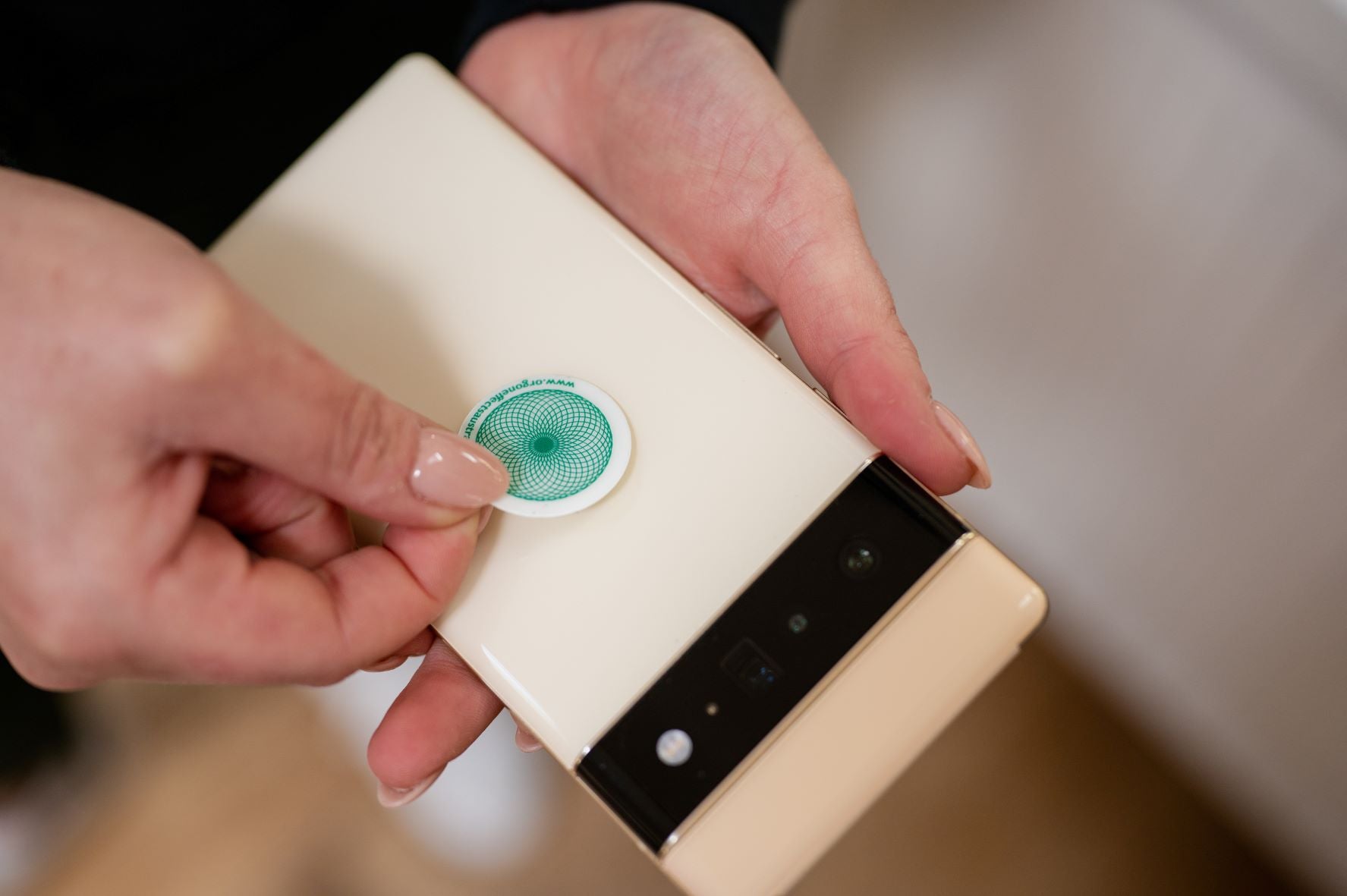Is your air fryer emitting dangerous radiation? The answer may surprise you! Check out everything you need to know about the latest craze in healthier cuisine.
Air fryers have become increasingly popular in recent years, with many people embracing this new way of cooking as a healthier alternative to traditional deep frying. But as with any new technology, there are always concerns about potential risks and side effects.
One question that has been raised about air fryers is whether they emit harmful radiation. With so much conflicting information out there, it can be hard to separate fact from fiction.
That's why in this article, we'll take a closer look at the science behind air fryers and radiation, and help you understand what you need to know to keep yourself and your family safe.
Whether you're a die-hard air fryer fan or you're just curious about this new trend, read on to learn more about the potential risks and benefits of this popular cooking appliance.
What is Radiation?
Radiation is the emission or transmission of energy waves or particles through space or a medium. It can originate from various sources, both natural and human-made.
Natural sources include the sun, radioactive material in the Earth's crust, and cosmic rays from outer space. Human-made sources include X-ray machines, nuclear power plants, and consumer products like cell phones.
Radiation is all around us, and most of it is harmless. However, exposure to high levels of radiation can be dangerous and even deadly.
The effects of radiation can vary depending on the type of radiation, the amount of exposure, and the duration of exposure.
Types of Radiation

Electromagnetic radiation originates from various sources, such as the sun, light bulbs, and electronic devices. Exposure to high-energy radiation, such as gamma rays, can have severe implications for the human body, including DNA damage and increased risk of cancer. On the other hand, low-energy radiation, like radio waves, is usually said to be safe for human health.
Infrared radiation, mostly generated by heat sources, has a warming effect on the human body. However, excessive exposure to infrared radiation can lead to burns or tissue damage. In everyday life, infrared radiation finds applications in thermal imaging cameras, remote controls, and heat lamps.
There are two main types of radiation: ionizing and non-ionizing. Ionizing radiation has enough energy to remove electrons from atoms or molecules, which can damage cells and DNA.
Examples of ionizing radiation include X-rays, gamma rays, and nuclear radiation.
Non-ionizing radiation has less energy and is generally considered less harmful. Examples of non-ionizing radiation include radio waves, microwaves, and visible light.
How Does an Air Fryer Work?

Air fryers operate by circulating hot air around food to create the same crispy texture found in conventional fried foods. Air fryers achieve this by removing high-fat, high-calorie oils from the cooking process.
By using only one tablespoon of cooking oil instead of several cups, a person can achieve deep fryer-like results with a fraction of the calories and fat.
An air fryer typically has a heating element and a fan that circulates the hot air. Most air fryers have a temperature control and a timer, which allows you to set the cooking time and temperature for different types of food.
Researchers say air fryers use hot air containing fine oil droplets to remove moisture from food. The result is a product with properties similar to fried foods, but with much less fat.
Like many other cooking methods, air frying triggers a chemical reaction called the Maillard effect that enhances the flavor and color of air-fried foods.
Radiation From Kitchen Appliances: Should we be Concerned?

There has been a growing concern regarding radiation exposure from kitchen appliances, particularly air fryers and microwaves.
Understanding the differences in radiation levels and processes of these two appliances is crucial to addressing these concerns effectively.
Firstly, it is important to acknowledge that both air fryers and microwaves emit various forms of radiation. However, the radiation emitted by microwaves is of a different nature than that of air fryers.
Microwaves make use of non-ionizing radiation, which generates heat by agitating water molecules in food. On the other hand, air fryers utilize convection heating and do not involve any form of radiation.
Despite the differences in radiation levels, it is necessary to recognize the potential health risks associated with air fryers.
Prolonged exposure to high temperatures within the air fryer can lead to the formation of acrylamide, a chemical compound that has been linked to an increased risk of cancer and other health problems.
To minimize these risks, it is advised to avoid overcooking or charring food and maintain proper ventilation in the kitchen while using the air fryer.
Role of Infrared Radiation in Cooking Food in Air Fryers

Infrared radiation plays a crucial role in cooking food in air fryers. These appliances utilize infrared radiation to heat up the food quickly and evenly.
When the air fryer is turned on, it emits a powerful stream of infrared radiation.
This radiation directly interacts with the food, penetrating its surface and heating it from the inside out.
Unlike traditional cooking methods, where the heat source is located outside the food, infrared radiation directly heats the food, leading to faster cooking times.
The use of infrared radiation ensures that the food is cooked evenly. As the radiation permeates the entire food item, it eliminates any hot spots that may occur with traditional cooking methods.
The direct contact between the radiation and food enables rapid heat transfer, reducing cooking times significantly.
Radiation Levels in Air Fryers

Air fryers use a type of non-ionizing radiation called infrared radiation, which is similar to the heat produced by a toaster or an oven. Electromagnetic radiation plays a crucial role in the functioning of air fryers, the increasingly popular kitchen appliances that offer a healthier alternative to traditional deep frying.
These devices utilize electromagnetic waves to generate heat, enabling the cooking of food with minimal to no added oil.
Understanding how electromagnetic radiation functions within air fryers is essential for users to fully grasp the science behind this cooking method.The type of radiation used by microwaves is known as the electromotive fields or EMF. This isn’t the same type of radiation associated with nuclear reactors, however, that does not mean it is harmless.
According to the National Cancer Institute, non-ionizing radiation includes visible, infrared, and ultraviolet light; microwaves; radio waves; and radiofrequency energy from cell phones. Non-ionizing radiation has been linked with an increased risk of cancer.
According to this article, there has been a link shown between an increase in brain tumors and the side of the head where a cellphone is placed for calling.
The author cautions that failure to address these concerns could lead to an increase in cancer, especially in young people.
This article points to evidence that excessive exposure to magnetic fields from power lines and other sources of electric current increases the risk of development of some cancers and neurodegenerative diseases.
It also links excessive exposure to RF radiation with an increased risk of cancer, male infertility, and neurobehavioral abnormalities.
Health Risks of Exposure to EMF
Exposure to high levels of ionizing radiation can cause a range of health problems, including radiation sickness, cancer, and genetic mutations.
A major worry surrounding EMF exposure is its potential to harm our cells.
Research suggests EMF radiation may disrupt normal cellular processes. For instance, one study observed an increase in free radical production within cells exposed to EMF. Free radicals contribute to the development of many diseases, potentially raising the risk of various health problems.
While a direct link between EMF exposure and diabetes hasn't been established, studies suggest transient electromagnetic fields, also known as "dirty electricity," may elevate blood sugar levels in individuals with pre-existing diabetes or prediabetes.
A meta analysis of 18 studies on EMF exposure suggested a link between EMF exposure and an increase in male breast cancer. A review of several studies on EMF exposure and cancer demonstrated increased rates of leukemia from EMF exposure at home and in the workplace.
A collection of studies examining the effects of EMF exposure on fetal development have reported changes in gene expression, antioxidant and oxidant levels, and DNA damage markers in umbilical cord blood.
These studies have suggested potential links to developmental disorders, cancers, and childhood development issues.
Further research is needed to fully understand the impact of EMF exposure on fetal health. However, some studies have indicated potential negative effects on fetal growth and health, as well as a possible increased risk of miscarriage and reduced amniotic fluid volume.
Initiatives like the Baby Safe Project aim to provide expecting mothers with information on reducing their EMF exposure as a precautionary measure.
Why You Shouldn’t Use an Air Fryer

In addition to EMF exposure, there is another major concern with the use of air fryers to prepare food: the formation of harmful compounds like acrylamide.
The problem arises because of the high heat that air fryers use to cook food in an enclosed composite space inside the unit.
At high temperatures, chemicals such as polycyclic aromatic hydrocarbons, aldehydes, acrylamide, and heterocyclic amines are more likely to be formed in foods.
These compounds have been proven scientifically to trigger or cause cancer cells in the body. Although research has yet to find a firm basis, the evidence for cancer risk cannot be denied.
The European Food Safety Authority found that air fryers product 30-40% more acrylamide than traditional deep frying when cooking potatoes.
What is a Maillard Reaction?

The Maillard reaction happens when sugars and amino acids in food rearrange themselves into a collection of rings. The Maillard effect occurs at a temperature between 280 and 340 degrees Fahrenheit. It not only browns the food but gives it a crispy texture.
The appearance, aroma, and taste are similar to deep-fried foods. An air fryer can achieve a crisp, golden texture for all foods. However, since the content of sugars and amino acids in fresh foods is different, the results will also be different. A fried fish looks different from roasted meat or baked cookies. The magnitude of the Maillard reaction distinguishes between boiled, steamed, fried, grilled, or roasted foods.
When food is exposed to high temperatures, the rate of a chemical reaction inside the food increases, and the Maillard effect speeds up.
It also increases the rate of evaporation of water from raw foods. The problem with high-temperature cooking, particularly frying meat in oil, is that it produces polycyclic aromatic hydrocarbons, or PAHs, and heterocyclic amines, or HCAs, which are chemicals with mutagenic properties. When consumed, they can trigger changes in your DNA and increase the risk of cancer.
Why Do Air Fryers Cause Cancer?

Air fryers can cause cancer if we do not follow certain rules that can lead to the production of carcinogenic elements.
When starchy foods like potatoes or rice are cooked at very high temperatures, similar to that used in an air fryer, a chemical known as acrylamide is formed. Acrylamide and other amines and hydrocarbons have long been known to cause cancer growth.
Acrylamide is classified as a group 2A carcinogen and can lead to growth in the ovaries, kidneys, and uterus to grow.
Another chemical known as polycyclic aromatic hydrocarbons is also a byproduct created when high temperatures are used in an air fryer to reheat oil or food. This chemical is thought to be responsible for the activities of cancer cells.
Air Fryers and Forever Chemicals

Recent concerns have surfaced about the non-stick coatings used in some air fryers. These fancy-sounding names - PTFE, PFOA, PFOS, and BPA - boil down to one thing: "forever chemicals" that can linger in the environment and potentially harm our health.
Think of them as the not-so-secret ingredient in that non-stick coating, kind of like Teflon.
The scary part?
"When air fryers get heated up, especially if they're scratched or damaged, these chemicals can leak into your food,"
warns Pam Hartnett, a registered dietitian and public health expert. And that's not something you want on your plate.
These chemicals might disrupt your hormones, and have been linked to potential reproductive and developmental problems. Unfortunately, most air fryers have some non-stick elements. Look for stainless steel or ceramic models to avoid this exposure.
Safety Measures for Air Fryer Usage
While air fryers are generally considered safe to use, there are some safety measures you should follow to avoid accidents or injuries.
With this in mind, we recommend protecting yourself from EMF exposure whether at home, or on the go.While air fryers may only create a small amount of this radiation, most people are constantly surrounded by many devices which are also emitting the same EMF.


- Get some EMF protection. We have a line of scientifically backed shungite products, which absorb EMF. We also have the very popular Orgonite Pyramids as well as our Orgone Energy Line which neutralizes EMF and is backed by 30 years of happy customers.
- Never use your air fryer near water or other liquids, as this can cause a fire or electrical shock.
- Always use oven mitts or other protective gear when handling hot air fryer baskets or trays.
- Make sure your air fryer is placed on a stable and heat-resistant surface.
- Don't overcrowd the air fryer basket, as this can affect the cooking time and result in unevenly cooked food. Finally, always unplug your air fryer when not in use.
How Do Air Fryers Cook Food Without Radiation?

The simple answer is they don't. Air Fryers use non-ionizing radiation.
Regardless of brand or model, air fryers operate on the principle of convection cooking. Convection mode works faster than a traditional convection oven by the movement of heated air. This cooking process is a combination of conductive heat transfer and forced hot air movement.
Simply put, as the temperature of the heat source rises, the surrounding molecules heat up and rise. These are then replaced by cold molecules. This creates a circulating flow that disperses heat. There are two convection cooking methods. One is mechanical and the other natural.





